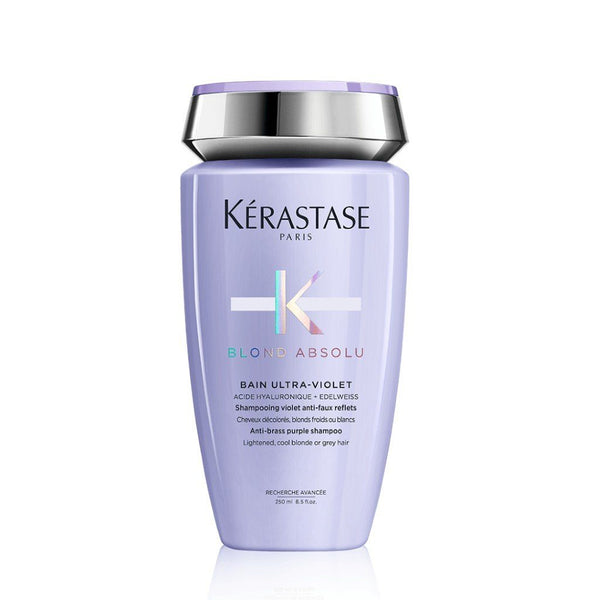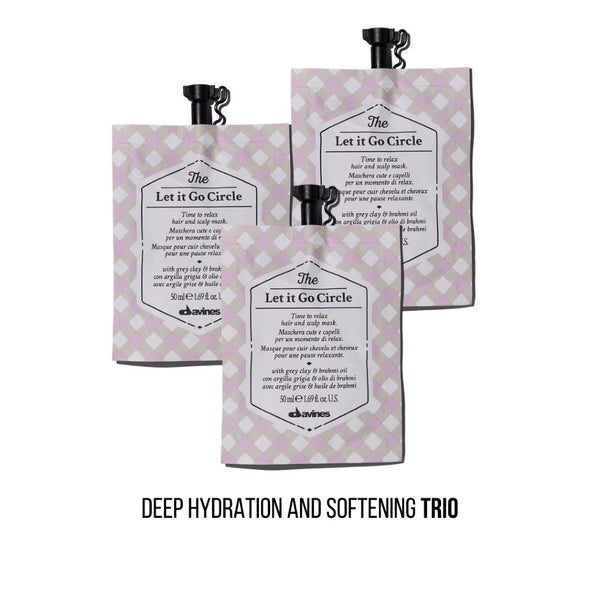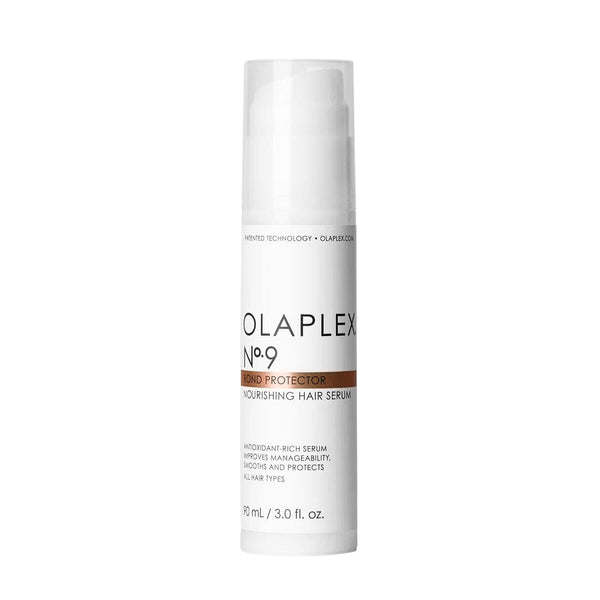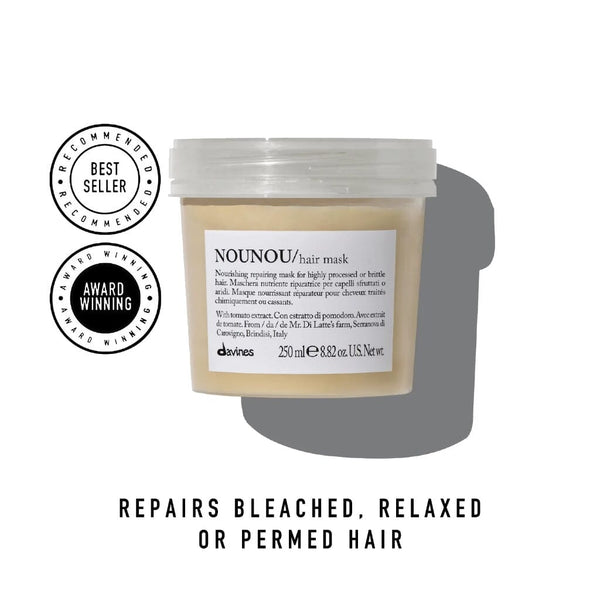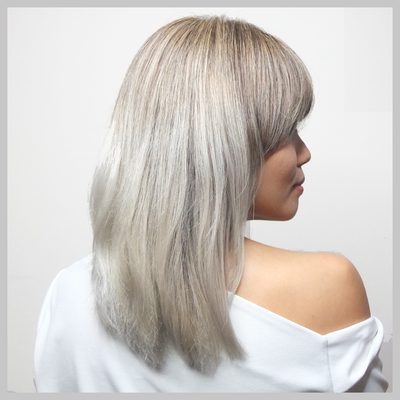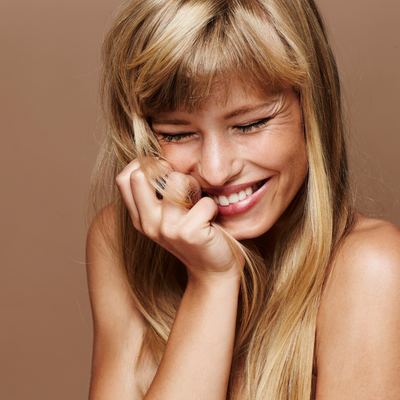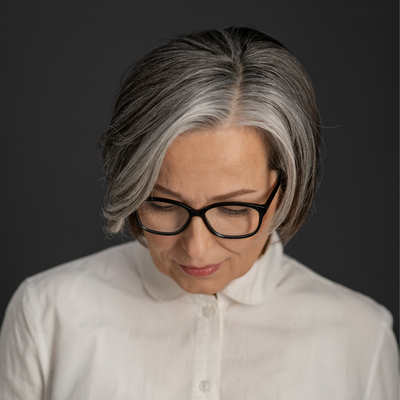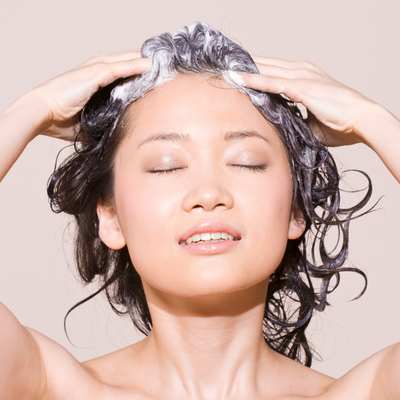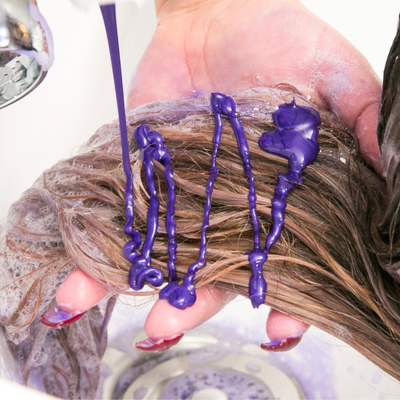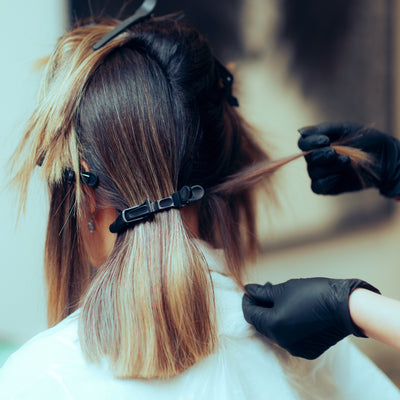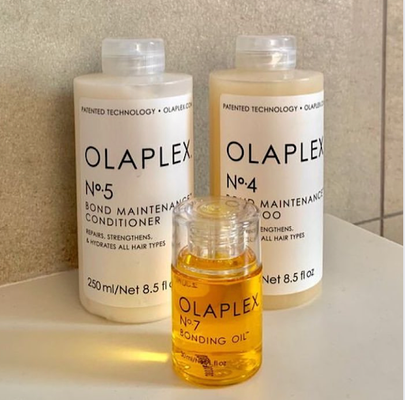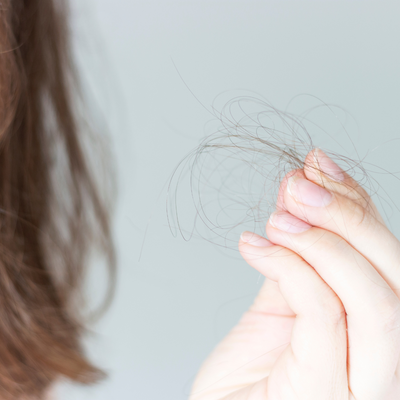Seeing brassy strands in your otherwise beautiful blonde? It can be frustrating to discover that after just a few weeks from the salon, your blonde hair can begin to show signs of change, with unwanted yellow shades. But why does hair turn brassy yellow, to begin with? We trace the culprits of this unsightly occurrence, and what you can do about it.

What is Brassy Hair
When stylists describe hair as brassy, they mean unwanted warm tones have begun to emerge in colored hair. This discoloration is typical for people who have dyed their hair from black or brown to blonde or platinum, or even a lighter brunette. Some describe it as “Kalawang” or “an off mustard-like shade.” Often it comes out yellow for light-colored blondes and orange in light-colored brunette hair. The reason they term it brassy is that like brass, the hair appears to show these yellow, orange, and reddish shades. The rate at which this happens can differ from person to person, but brassiness can be expected - but can certainly be fixed!
The Brassy Culprits
Color Fading & Oxidation

The process of bleaching your hair involves diluting the melanin in your strands, which makes room in the hair shaft to deposit color. But over time these color molecules, especially the cooler bluer and purple tones, in hair dyes eventually fade and reveal the remaining color underneath. This unevenness creates that brassiness.
What can you do:
Purple shampoo is key to brassy-free strands. It is good to keep it handy for all the culprits on this list. Purple (and blue) shampoos redeposit lost cool shades back to the hair neutralizing brassy strands. If you’re looking for a strongly pigmented purple shampoo for your blonde shades, try Kérastase Blonde Absolu Bain, P1750. It removes brassiness and yellow undertones effectively.
Chlorine & UV Light

Pool water and sunlight can be terrible for colored hair, but more so in blonde hair. Chemicals like chlorine in the pool can not only damage strands but seriously discolor them to a nasty greenish shade. Plus UV rays “cook” strands and makes bleached hair fade faster. But that doesn’t mean you have to avoid the summer altogether. Making sure you put sun protection on your hair and reduce chlorine exposure to a minimum should help lessen the damaging effects.
What you can do:
If swimming is unavoidable, soak your hair in unchlorinated water first to avoid absorbing the chlorine. This won’t completely protect strands but it will lessen the effects. For sun damage, try Davines SU Hair Milk, P1,450, leave-on softening milk enriched with UV protective filters that protect cosmetic color and hydration during sun exposure.
Sulfates in Shampoos

In the Philippines, we usually like to wash our hair every day. The heat and sweat can be hard to just grin and bear for good blonde hair. But the harsh chemicals in shampoos like sulfates can strip hair of color, especially those that balance the tone of your hair (remember that cooler shades fade faster). Sulfates give shampoos that sudsy foam we associate with cleansing but luckily you don’t necessarily need sulfates for clean hair.
What you can do:
Get a sulfate-free shampoo. These are gentler on the hair and will protect your strands from excessive fading. Try AVEDA Blonde Revival™ Purple Toning Shampoo, P1,800, a sulfate-free cleanser with a low lather formula to maximize toning benefits while illuminating your beautiful blonde after just one use.
Hard Water

Hard water or mineral-rich water is a type of shower water that has heavy molecules within it. It can be damaging to blonde strands over time as it can slowly cause a build-up on the hair giving it a brassy, darker, and dull color. It also makes hair more prone to tangles.
What you can do:
You may not be able to choose the water where you are but having a purple toning conditioner that you can use regularly (not daily as this is not advised), might do the trick to neutralize its worse effects. Try L’Oréal Pro Serie Expect Silver Conditioner, P950. Its potent pigments help to restore the strands while leaving them soft and shiny. If you prefer a plant-based conditioner, consider Davines Alchemic Silver Conditioner, P1,600, a pigmented color-enhancing purple conditioner for platinum blondes that adds luster to hair.
Time for some real talk! Depending on the severity of the brassiness, you may need to go back to the salon and have it toned or recolored. This means they will add intense pigments to recolor the strands, returning them to their intended shade. Although this may be ideal in terms of achieving the best results, now you know you can do a few things at home too to protect that gorgeous blonde.
So did this article help? We’ve just gotten started. We care about your hair, tell our hair experts about it and we will aim to help. Message us today.


